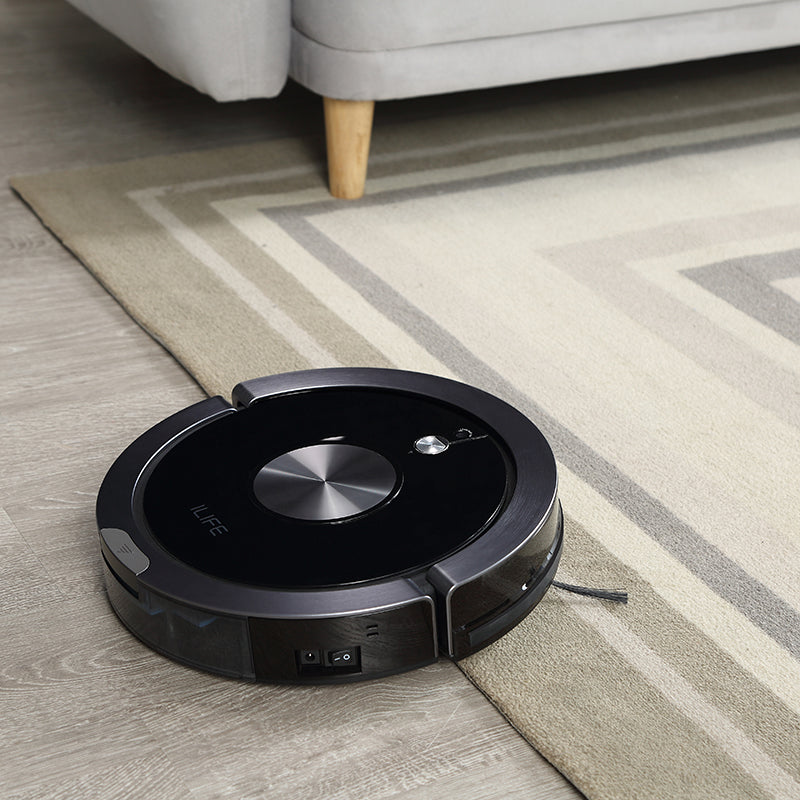Identifying the Problem
How to fix vacuum cleaner? Before diving into how to fix your vacuum cleaner, it’s crucial to identify what’s wrong. Start by checking the most common issues. Look for signs of blockages, examine the air filters, and listen for unusual noises. Check if the vacuum isn’t picking up debris as it should, or if it’s leaving residue on your carpets or floors. Another common sign of a problem is when your vacuum cleaner shuts off unexpectedly.

If you observe these issues, you have a starting point for troubleshooting. Remember, correctly identifying the problem is half the battle won. This step ensures that you address the correct issue, without causing unnecessary damage or wasting time on the wrong solution. Keep a checklist of these common signs and mark any that apply to your situation. This will help streamline the process as you move on to the next troubleshooting steps.
Basic Maintenance Tips Before Troubleshooting
Before jumping into how to fix your vacuum cleaner, carrying out some basic maintenance can prevent or solve many issues. Here are straightforward tips to follow before troubleshooting in depth:
- Empty the Dust Bin or Change the Bag: A full bag or dust bin can reduce suction power significantly. Make sure to empty or replace it if it’s near capacity.
- Inspect for Wear and Tear: Regularly check your vacuum’s brush roll, belts, and hoses for any signs of damage. Frayed belts or tangled brush rolls need attention before further use.
- Wipe Down the Vacuum: Dust and debris can adhere to the vacuum’s exterior, potentially clogging moving parts. Wipe the machine with a dry cloth to keep it clean.
- Check the Power Supply: Ensure the cord is intact and not frayed. Also, verify that the vacuum is properly plugged in and the outlet is functioning.
- Adjust Settings According to Floor Type: Some vacuums have settings for different floor types. Using the right setting enhances performance and prevents unnecessary strain on the machine.
Performing these simple maintenance steps can often restore your vacuum cleaner’s performance and prevent the need for more complex solutions. Take the time to carry these out regularly, and your vacuum is more likely to remain in good working order.
Clogged Air Filters and How to Clean Them
One of the top reasons a vacuum cleaner loses efficiency is a clogged air filter. Over time, dirt and debris build up in the filter, obstructing airflow and reducing suction power. Here is how to fix vacuum cleaner filters when they’re clogged:
- Locate the Filter: Check your vacuum’s manual to find the filter’s location.
- Remove the Filter: Turn off and unplug the vacuum. Carefully take out the filter.
- Tap Out Loose Debris: Gently tap the filter over a trash bin to dislodge any loose dust.
- Rinse the Filter (if washable): If the manual says it’s safe, rinse the filter under cold water.
- Air Dry Completely: Before reinstalling, ensure the filter is completely dry to prevent mildew.
- Replace if Needed: Filters worn or damaged beyond cleaning should be replaced with new ones.
Remember, cleaning frequency depends on use. Pet owners or those in dusty environments should clean filters more often. By keeping air filters unclogged, your vacuum maintains its suction power and operates more effectively.

Clearing Blockages in Hoses and Attachments
When a vacuum cleaner stops picking up dirt well, often hoses and attachments are where clogs form. Here’s how to fix vacuum cleaner blockages effectively:
- Detach Hoses and Attachments: Turn off and unplug your vacuum. Carefully remove the hoses and attachments.
- Visual Inspection: Look through the hoses and attachments. Search for obvious blockages like pet hair or large debris.
- Use a Long, Flexible Object: If you can’t see the blockage, gently use a broom handle or a bent coat hanger to push it through.
- Rinse with Water: Where possible, rinse hoses with water to remove stubborn dirt.
- Dry Thoroughly: Before reattaching, ensure everything is fully dry to prevent mold.
- Check for Damage: While cleaning, look for any holes or tears in the hoses which can also cause loss of suction.
- Reassemble: Once everything is clean and dry, put your vacuum back together.
By following these steps, most blockages can be removed, restoring your vacuum’s ability to clean efficiently. Make it a habit to check for clogs regularly to maintain peak vacuum performance.
Solutions for Loss of Suction
Loss of suction in a vacuum cleaner can be a frustrating issue, but fortunately, many suction problems are solvable with a few DIY steps. If you’ve noticed your vacuum isn’t picking up like it used to, here’s how to fix vacuum cleaner suction:
- Check for Full Bags or Canisters: A full bag or canister can greatly hinder suction. If full, empty or replace it immediately.
- Examine All Filters: Beyond the main air filter, some vacuums also have secondary filters. Check these and clean or replace as necessary.
- Inspect for Blockages: Sometimes objects get lodged in the vacuum’s pathways. Check for and remove any blockages in the hoses, attachments, or the vacuum’s intake area.
- Ensure Proper Seal and No Leaks: Examine the vacuum for any gaps or cracks that might cause air leaks. A proper seal is crucial for maintaining strong suction.
- Test the Suction Power: After addressing the above issues, turn on the vacuum to test the suction power. If there’s still a problem, it might be an internal issue like a faulty motor.
If these solutions don’t restore your vacuum’s suction, the issue might be more serious, such as a failing motor or a damaged belt. In the next sections, we’ll delve into motor and belt issues and how to address them. Remember, regular maintenance and prompt attention to issues can prevent loss of suction and extend the life of your vacuum cleaner.

Motor and Belt Issues: Signs and Fixes
Dealing with motor and belt issues in a vacuum cleaner can be daunting. However, recognizing the signs and knowing how to fix them can save you from the frustration of a malfunctioning appliance. Look out for these key indicators that suggest motor or belt problems:
- Burning Smell: A distinct burning odor may signal an overheated motor or a frayed belt.
- Loud Noises: Grinding or whining sounds can indicate motor distress or a stretched belt.
- Reduced Rotation: If the brush roll isn’t turning properly, the belt might be loose or broken.
- Vacuum Stops: A sudden shutdown can be the consequence of motor overheating.
When you encounter these signals, here’s how to fix vacuum cleaner motor and belt issues:
- Unplug and Open: Always make sure to unplug your vacuum before attempting repairs. Open the vacuum’s casing carefully.
- Inspect the Belt: Check the belt for any signs of wear, cracks, or stretching. Replace it if it’s damaged or has lost elasticity.
- Clean the Motor Area: Remove any dust or debris that may be obstructing the motor’s ventilation or operation. Use a soft brush or cloth.
- Test the Motor: Listen for abnormal sounds when turning it by hand. In case of noticeable issues, a professional may need to replace the motor.
- Reassemble: After any replacements or cleaning, put the vacuum back together securely.
Motor and belt complications are common in vacuum cleaners, but with careful attention, they are often resolvable. If the problem persists after troubleshooting, it might be time to call in a professional or consider the possibility of a replacement unit.
Overcoming Electrical Problems
When your vacuum cleaner has electrical issues, it can be both inconvenient and hazardous. Understanding how to fix vacuum cleaner electrical problems yourself can save you time and money. However, if you’re not confident or experienced with electrical repairs, it’s safer to seek a professional’s help. Here’s a step-by-step guide for troubleshooting electrical faults:
- Check the Power Cord: Look for any damage like cuts or fraying. If damaged, a replacement is necessary.
- Examine the Plug: Ensure the plug’s prongs aren’t bent or dirty, which can affect contact with the outlet.
- Test the Outlet: Plug another device into the same outlet to confirm it’s providing power.
- Inspect the Switch: Sometimes the issue is with the vacuum’s power switch. If it feels loose or fails to click, it may need replacing.
- Look for a Blown Fuse: A vacuum cleaner might stop working if your home’s fuse is blown or if there is a tripped circuit breaker.
- Internal Wiring: Loose or broken wires inside the vacuum can cause power failures. Check for these only if you know how to safely access internal components.
- Thermal Fuse: Some vacuums have a thermal fuse that cuts power if the unit overheats. This may need replacing if it’s been triggered.
Addressing electrical problems may sound complex, but many solutions are straightforward. Remember to always disconnect your vacuum from the power source before attempting any fixes. If you’ve tried these steps and the vacuum still has issues, it’s best to seek professional repair services. Regular electrical maintenance checks can prevent these problems from occurring, ensuring your vacuum cleaner runs smoothly.
When to Seek Professional Repair or Consider Replacement
After exploring various DIY fixes for your vacuum cleaner, there may come a time when professional help is required. Here’s when to consider seeking repair services or pondering a replacement:
- Persistent Issues: If problems persist after you apply fixes, it’s time to call an expert.
- Complex Electrical Work: For safety, leave intricate electrical repairs to the professionals.
- Motor or Belt Repeatedly Failing: Frequent failures suggest deeper issues, possibly needing expert assessment.
- Old Vacuum Cleaner: An older model might not be worth the cost of repair. Replacing it could be more economical.
- Parts No Longer Available: When parts are discontinued, repair becomes impractical. Look into newer models.
- Cost of Repair vs. Replacement: If repair costs approach or exceed half of a new vacuum, it’s wise to replace.
- Warranty and Service Plans: Check if your warranty or service plan makes repair a better option than replacement.
- Performance Issues Unresolved: When cleaning performance doesn’t improve, it might be time for a new machine.
Handling vacuum cleaner issues can often be a simple task, but recognizing when you need an expert’s touch is just as important. Don’t hesitate to call a professional when needed, or to invest in a new, more efficient vacuum cleaner if that’s the more sensible choice. Regular maintenance is key, but knowing when to let go can save you time and frustration in the long run.


